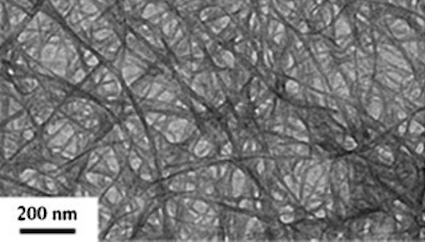UltraCeal – Ultra high barriers based on cellulose nanofibrils
Luca Müller, Feyza Karasu, Yves Leterrier
UltraCeal is a Swiss-Swedish collaboration coordinated by LPAC. The objective is to develop novel multilayer materials based on cellulose nanofibrils and various coatings and their roll-to-roll process method with exceptional gas-barrier and optical performance for encapsulation of solar cells and OLED. LPAC creates novel organic/inorganic hybrids and characterizes their microstructure, surface properties and permeability to water vapor. High transparency and barrier improvement factors larger than 500 were achieved with thin hybrid/inorganic/hybrid coatings.
Funding: Eureka program and Swiss Commission for Technology and Innovation
Project partners
-
RISE-Innventia (S)
-
Stora Enso (S)
-
Rolic Technologies (CH)
-
Exeger (S)
http://www.eurekanetwork.org/project/id/9924
Bioinspired self-cleaning surfaces
Embed of video is only possible from Mediaspace, SwitchTube, Vimeo or Youtube
The objective is to create self-cleaning, superamphiphobic and superhard surfaces, in the form of synthetic replica of natural surfaces such as leaves and petals of selected plants. A low pressure, atmospheric, cost-effective, energy efficient and fast UV printing process is used in combination with tailored formulations based on hybrid organic-inorganic precursors and low surface tension oligomers. Fluorine-free, antiscratch and colored self-cleaning surfaces are produced for ‘zero waste’ food packaging and various self-cleaning applications with high durability. The antibacterial properties of these surfaces are also explored and alternative process approaches based on hydrophobized nanocellulose are developed. Part of the activity is carried out in collaboration with designers (EPFL+ECAL Lab and ECAL) to develop novel concepts relevant for food such as packaging and accessories, with funding from the EPFL Integrated Food and Nutrition Center.
Funding: EPFL Integrated Food and Nutrition Center
Collaborations
-
B. Durandard, N. Henchoz (EPFL+ECAL Lab)
-
Ecole Cantonale d’Art de Lausanne (ECAL)
-
Lausanne botanical garden
-
G. Gülez, T. Battin (SBER-EPFL)
-
EPFL Bioinspired projects platform
-
R. Bongiovanni (Politecnico di Torino)
Publication
-
Gonzales Lazo et al, A Facile in Situ and UV Printing Process for Bioinspired Self-Cleaning Surfaces, Materials, 2016, 9(9), 738; doi:10.3390/ma9090738
Anisotropic soft and responsive biocomposite scaffolds
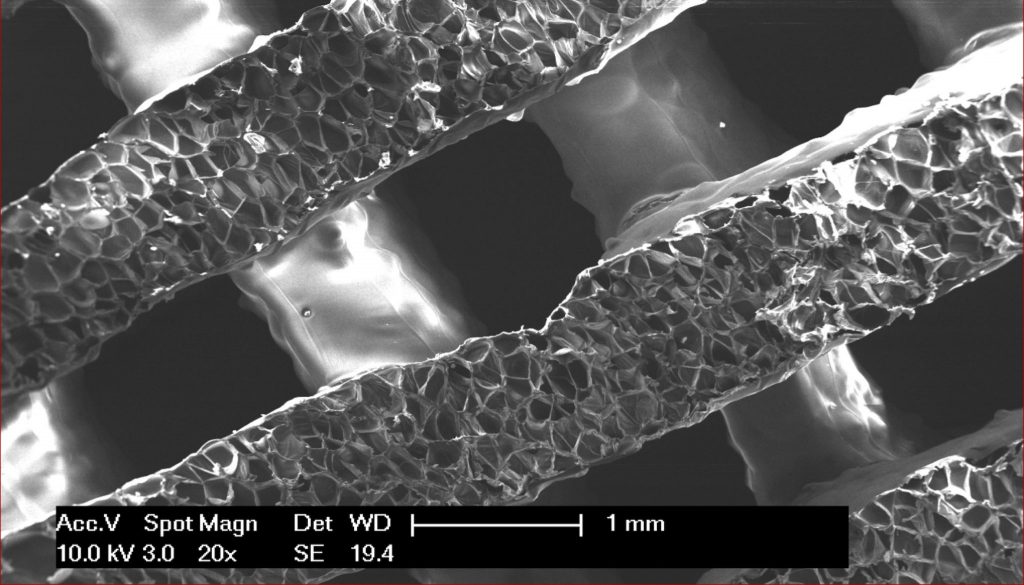
-
EPFL-LBO: Jens Antons, Dominique Pioletti
-
CHUV: Lee Laurent-Appelgate
SHAPER2 – Synthetic hydrogel adhesive promoting enhancement of tissue repair
Céline Wyss, Pierre-Etienne Bourban
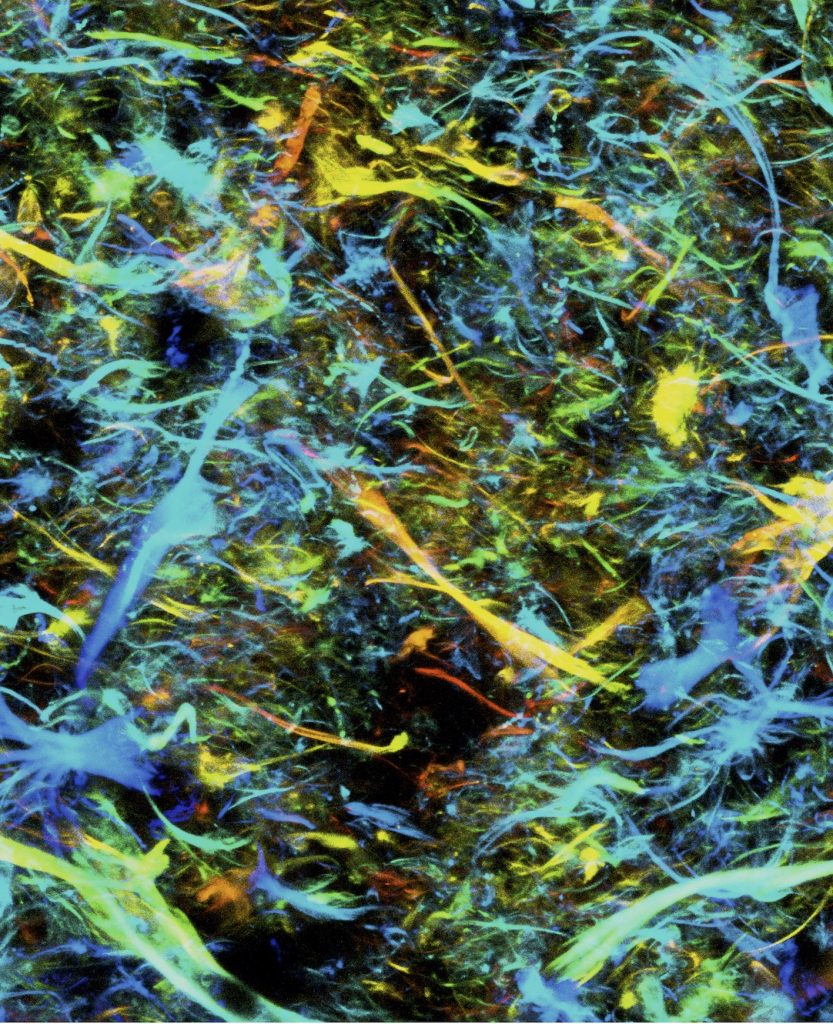
- EPFL-LBO: Peyman Karami, Dominique Pioletti
- EPFL-LAPD: Christophe Moser
- CHUV: Martin Broome
SMS – Light and stable sandwich material and structure for space mirror application
Julien Carron, Mathieu Piccand, Marek Jancik, Véronique Michaud
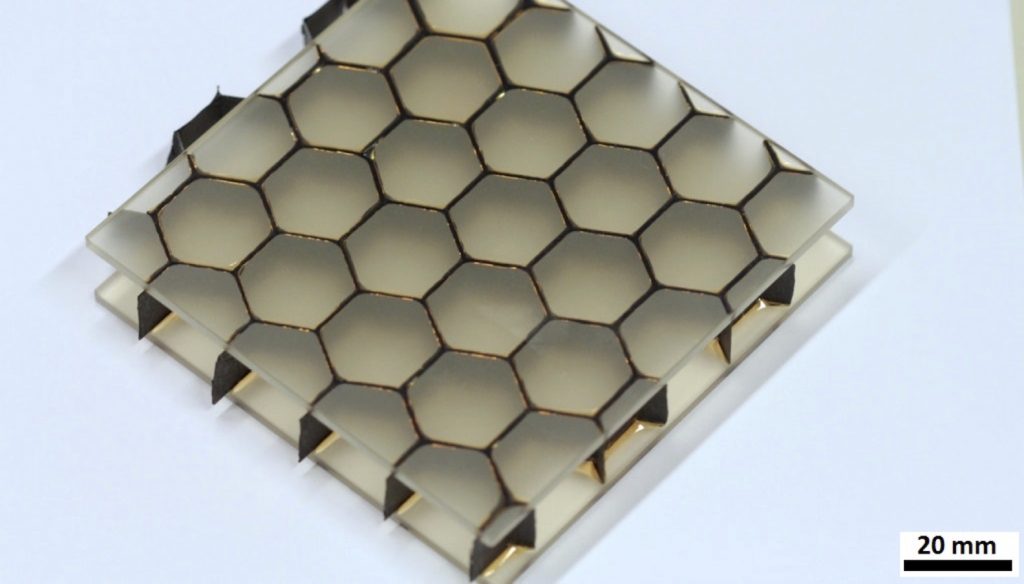
Sandwich structure with zerodur glass skins and carbon honeycomb
The European SMS project, which stands for “Sandwich Material and Structure”, aims to create break-through innovation on essential building blocks, in the field of light and stable sandwich structures, in order to make them lighter even at very large scale. In the specific domain of space mirrors, the completion of the project will produce an amplified profit at product level, allowing to design new structures, way lighter and more stable than the reference solutions, made out of monolithic glass lightened by machining. In this project, the main task of LPAC is to select and evaluate organic bonding scenarios, which minimize internal stresses while complying with all space related requirements.
Funding: European Union’s Horizon 2020 research and innovation programme
Project partners
- Thales Alenia Space
- Politecnico di Torino
- North Thin Ply Technology Sàrl
- MateriaNova
http://sms-h2020.eu/the-project
XinoCaps – Xylylene-inorganic high barrier encapsulation
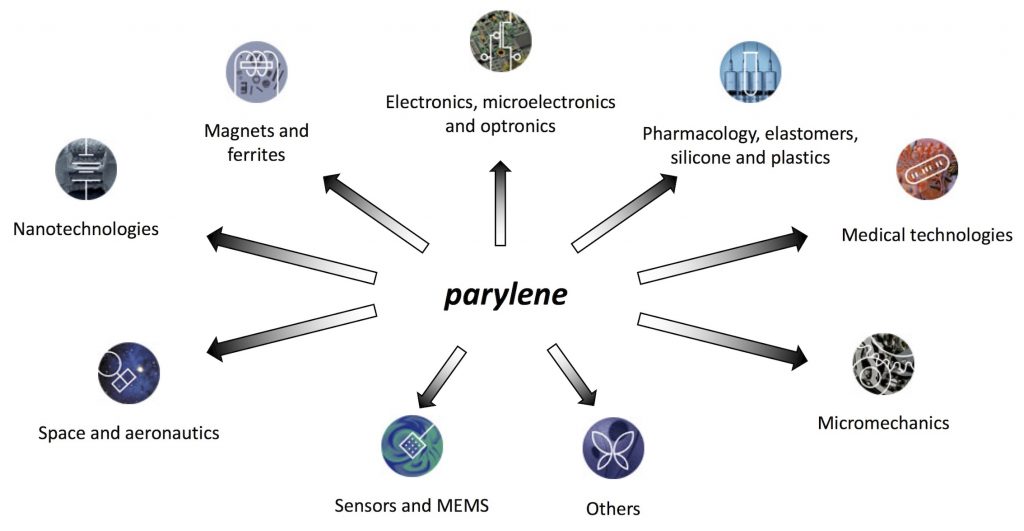
-
Swiss Plasma Center (SPC-EPFL)
-
Comelec SA (CH)
Functional composites with damage control and repair
Amaël Cohades, Erica Manfredi, Véronique Michaud
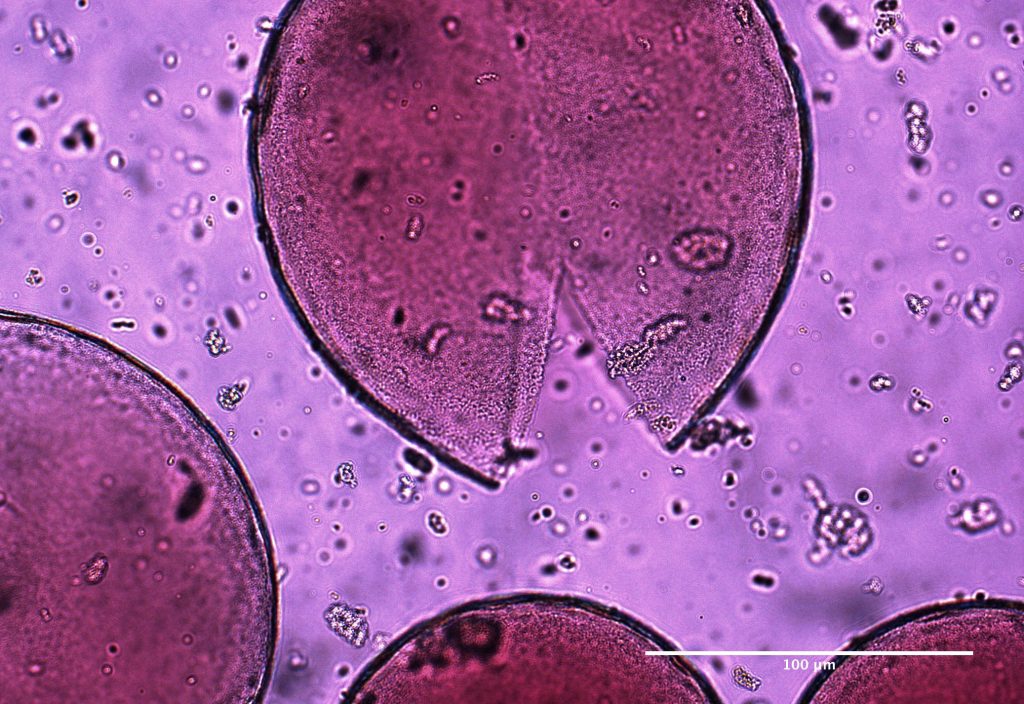
Adaptive or “smart” composite materials integrate actuators and sensors and can “react to” their service environment, and enable gains in efficiency not only by reducing structural weight, but by integrating functions directly into the structure. The present project is a continuation of an ongoing research effort on the development of Active Sensing and Repair Composites, which are manufactured by Liquid Composite Moulding (LCM) and integrate healing agents to repair damage, shape memory alloy wires to close cracks and if needed locally heat-up the healing systems. Emphasis is placed on the development of the combination of adapted materials and process windows to produce these composite parts by LCM techniques, and on the quantification of these materials response to damage, and to subsequent healing. Healing systems are either capsules containing a solvent, a thermoset/thermoplastic blend or a nanofibre layer which is also expected to bring toughening to the composite part.
Funding: Swiss National Science Foundation
http://p3.snf.ch/project-150007
Publications
- Manfredi E, Cohades A, Richard I, Michaud V. Assessment of solvent capsule-based self-healing for woven E-glass fibre-reinforced polymers. Smart Mater Struct 2015;24:1–11.
- Cohades A, Manfredi E, Plummer J-C, Michaud V. Thermal mending in immiscible poly(ε-caprolactone)/epoxy blends. Eur Polym J 2016;81:114–28.
- Cohades A., Michaud V., Thermal mending in E-glass reinforced Poly(ε-caprolactone)/epoxy blends, Compos. Part A Appl. Sci. Manuf. 2017, 99, 129.
- Cohades A., Michaud V., Damage recovery after impact in E-glass reinforced Poly(ε-caprolactone)/epoxy blends, Compos. Struct. 2017, 180, 439.
SCCER (Swiss Competence Center for Energy Research) – Efficient Technology and Systems for Mobility
Damiano Salvatori, Sara Dalle Vacche, Baris Caglar, Véronique Michaud

The Swiss Competence Center for Energy Research – Efficient Technologies and Systems for Mobility (SCCER Mobility) aims at developing the knowledge and technologies essential for the transition from the current fossil fuel based transportation system to a sustainable one, featuring minimal CO2 output, primary energy demand as well as virtually zero-pollutant emissions. LPAC is part of the Capacity Area A3, which investigates technologies and strategies to minimize non-propulsive energy demand of vehicles for improved efficiency. This includes the reduction of vehicle mass by replacing conventional materials such as aluminum or steel with lighter ones. To achieve this, new processing routes for high volume production of lightweight thermoplastic and bioinspired composites with outstanding mechanical properties are developed. We focus on a novel process for thermoplastic composite manufacturing for the automotive industry, exploiting the concept of resin transfer molding (RTM), a common process for thermoset composites, for production of thermoplastic composites by melt processing of a low viscosity thermoplastic matrix. This melt thermoplastic resin transfer molding process (mTP-RTM) combines the advantages of RTM (shape complexity, inclusion of functional parts, cheap equipment) with those of a thermoplastic matrix (toughness, recyclability, etc.). In order to make it feasible for high-volume applications, the cycle time has to be reduced. This is carried out both by enhancing fabric permeability and reducing matrix viscosity.
Funding: Innosuisse – Swiss Innovation Agency
Industrial partner: Solvay – Research Center of Lyon (France)
Publication
- D. Salvatori, B. Caglar, H. Teixido, V. Michaud, Permeability and Capillary Effects in a Channel-wise Non-Crimp Fabric, Composites part A, 108, 2018, Pages 41–52. https://doi.org/10.1016/j.compositesa.2018.02.015
RailPad – Noise reduction and reduced track maintenance
Adrien Demongeot, Véronique Michaud
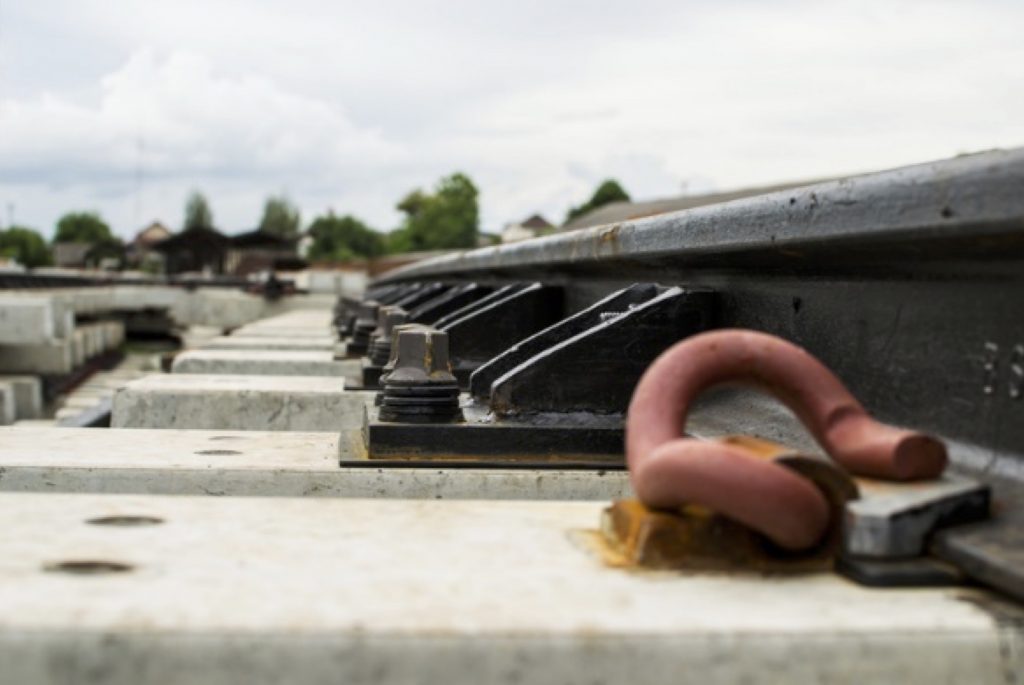
With the continuous growth of railway traffic and population in Switzerland, railway noise has become a severe environmental problem. At typical railway speeds, the most relevant source of noise is “rolling noise” emitted from the wheel and from the rail. One approach to reducing rolling noise without the cost-intensive addition of novel components to the railway track is to improve the rail pad, which forms part of the rail fastening system and typically consists of a simple rubber cushion inserted between the rails and sleepers. The aim of this project is to develop a novel rail pad system that is optimized with respect to both railway noise reduction and protection of the railway superstructure against transient loads and vibrations. The role of LPAC is centered on the determination of the optimal material microstructure to reach the desired damping properties.
Funding: Federal Office for the Environment
Project partners
- LMOM – EPFL
- LMAF – EPFL
- LTS2 – EPFL
- TRACE – EPFL
- EMPA
- SBB-CFF-FFS
https://www.bafu.admin.ch/bafu/fr/home/themes/bruit.html
Agilis – A prosthetic foot with advanced design features for Global South countries
Rajasundar Chandran, Gregory Huot, Véronique Michaud
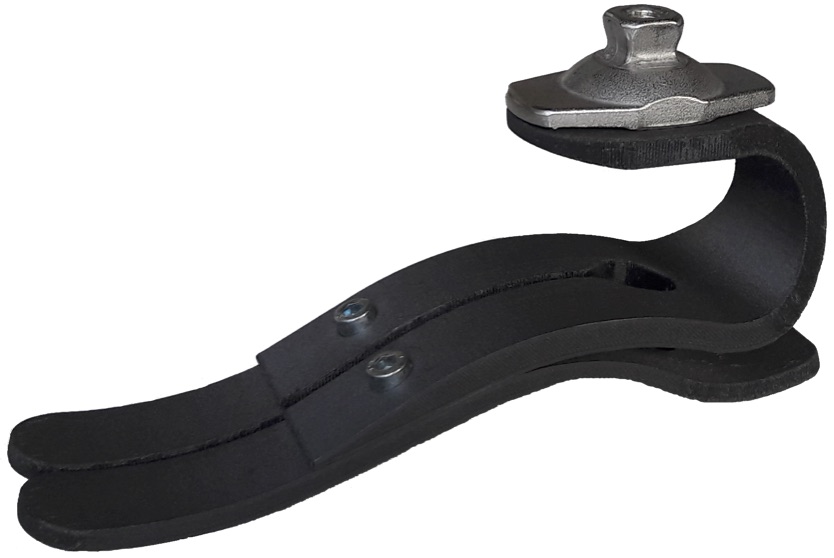
3D printed model of an example of prototype design
The goal of the Agilis project is to develop a prosthetic foot designed for use by amputees with high mobility needs, in the hopes of improving their capacity for socio-economic integration. Much of the technology currently available in developed countries is often out of reach in South countries due to cost. Moreover, these technologies are generally not adapted for use in these countries (durability, aesthetic aspect, etc.). The project aims to meet this growing worldwide need through targeted technology.
As the prosthesis is designed for humanitarian needs, limiting manufacturing costs is key for promoting the widest possible access to the new product. LPAC’s approach in this collaborative project makes use of a “cost modeling” approach to identify and test potential materials and processes that fit the technical and economical target.
https://actu.epfl.ch/news/the-agilis-prosthetic-foot-project-launches-its-co/
Funded by Innosuisse Swiss Innovation Agency
Project Partners
- CODEV’s EssentialTech program
- EPFL-LMAM
- EPFL- LMAF
- The International Committee of the Red Cross (ICRC)
- CR Equipements SA
